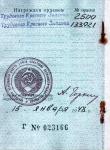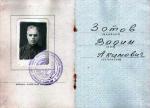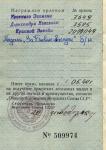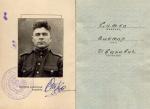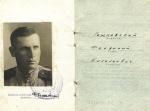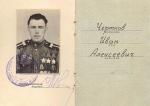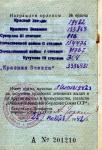-
Posts
619 -
Joined
-
Last visited
-
Days Won
2
Content Type
Profiles
Forums
Blogs
Gallery
Events
Store
Everything posted by Mondvor
-

Soviet Fake orderbooks
Mondvor replied to Mondvor's topic in USSR: Soviet Orders, Medals & Decorations
-

Soviet Fake orderbooks
Mondvor replied to Mondvor's topic in USSR: Soviet Orders, Medals & Decorations
-

Soviet Fake orderbooks
Mondvor replied to Mondvor's topic in USSR: Soviet Orders, Medals & Decorations
-

Soviet Fake orderbooks
Mondvor replied to Mondvor's topic in USSR: Soviet Orders, Medals & Decorations
-

Soviet Fake orderbooks
Mondvor replied to Mondvor's topic in USSR: Soviet Orders, Medals & Decorations
-

Soviet Fake orderbooks
Mondvor replied to Mondvor's topic in USSR: Soviet Orders, Medals & Decorations
-

Soviet Fake orderbooks
Mondvor replied to Mondvor's topic in USSR: Soviet Orders, Medals & Decorations
-

Soviet Fake orderbooks
Mondvor replied to Mondvor's topic in USSR: Soviet Orders, Medals & Decorations
-

Soviet Fake orderbooks
Mondvor replied to Mondvor's topic in USSR: Soviet Orders, Medals & Decorations
-

Soviet Fake orderbooks
Mondvor replied to Mondvor's topic in USSR: Soviet Orders, Medals & Decorations
-
-

Soviet Guards Sappers Major Kremnev: OPW1 & OPW2
Mondvor replied to a topic in USSR: Soviet Orders, Medals & Decorations
Well, it could be even 3XXXX range number. Sometimes 3 in sloppy handwriting looks almost like 8. And the date is perfectly matching. Many 31 - 33.000 were awarded in september-october 1942. -

Soviet Guards Sappers Major Kremnev: OPW1 & OPW2
Mondvor replied to a topic in USSR: Soviet Orders, Medals & Decorations
Rick, this is not a confirmation. It's more like refutation... Right after order's number you can see the symbol of two "waves" - ~. I don't know if you use same symbol in English, but in Russian it means "approximately". And after this "wave" symbol there is Russian word "НЕРАЗБОРЧИВО". That means illegible or indecipherable. -

Soviet The Order of the Red Banner
Mondvor replied to Gerd Becker's topic in USSR: Soviet Orders, Medals & Decorations
Dave, Of course if you are interested I can post all fake orderbooks on the forum. I can do that later in the evening because I'm on my job right now and I don't have access to my files. BTW many of them filled with identical handwriting. I bet they were made by the same person... -

Soviet The Order of the Red Banner
Mondvor replied to Gerd Becker's topic in USSR: Soviet Orders, Medals & Decorations
Right, exactly. -

Soviet The Order of the Red Banner
Mondvor replied to Gerd Becker's topic in USSR: Soviet Orders, Medals & Decorations
Alan, Of course by using "sunlight method" paper would suffer to some extend. BTW, it would become lighter, not darker. But ink would be removed in much faster rate. So after some time you will get blank orderbook which is somewhat lighter (or more pale) than normal orderbook. Not many people would pay attention on that fact. Even if you compare normal orderbooks without "sunburn" you will see that intensivity (contrast) of greyish-bluish-greenish pattern of the orderbook is not the same for different documents. It depends on how many paint was put in a machine during printing. -

Soviet The Order of the Red Banner
Mondvor replied to Gerd Becker's topic in USSR: Soviet Orders, Medals & Decorations
Here is an example of a "washed" book with the overdose of the chemicals. Old ink removed OK, but some orderbook's paper natural paint removed as well. This one is easy to detect -

Soviet The Order of the Red Banner
Mondvor replied to Gerd Becker's topic in USSR: Soviet Orders, Medals & Decorations
Most of those "washed" documents appeared more than 5 years ago. This is an "old school technology", so it is no longer used by "black dealers". More recent tactics is to remove the old ink from the paper with a help of a sunlight. The document exposed to direct sun rays for couple of weeks sometimes looks blank. I've seen a Russian dealer who kept several unfolded orderbooks behind his car's windshield. So be aware... -

Soviet The Order of the Red Banner
Mondvor replied to Gerd Becker's topic in USSR: Soviet Orders, Medals & Decorations
-

Soviet The Order of the Red Banner
Mondvor replied to Gerd Becker's topic in USSR: Soviet Orders, Medals & Decorations
-

Soviet The Order of the Red Banner
Mondvor replied to Gerd Becker's topic in USSR: Soviet Orders, Medals & Decorations
Thanks a lot Alan! As I suspected - orderbook is a fake. It is so-called "washed" book. Original entries were removed and substituted for fake ones. I can show many ot those books, but I don't think it is very interesting. Foto is fake as well. If you carefully look at the seal, you will see that there is a tiny snowflake between the words. Only late seals from 60-80th had that type of symbol. War time seals and early post-war seals all had five-rayed star, not a snowflake. The size of the letters was bigger. I suspect that this particular document was made in Germany, I've seen many of them coming from that country. -

Soviet The Order of the Red Banner
Mondvor replied to Gerd Becker's topic in USSR: Soviet Orders, Medals & Decorations
Hi Alan, Thanks for sharing with us. Could you show the second page of Toporkov's orderbook? And if possible, please, tell us what it says on the seal that applied to the picture of recipient. -

Soviet An Award Card Like No Other
Mondvor replied to NavyFCO's topic in USSR: Soviet Orders, Medals & Decorations
About Bradley's Award Record Card... Are you sure this document is real? First there is no seal on that document. Second - there is a mistake in the entry about Suvorov 1st class. This order could not be awarded by 1st Ukrainian Front Prikaz. In according with the statute of this order it could be awarded only with a Supreme Soviet Ukaz. I'm not saying this is a fake paper, but it looks really strange. I've seen some fake research papers. -

Soviet An Award Card Like No Other
Mondvor replied to NavyFCO's topic in USSR: Soviet Orders, Medals & Decorations
To all sharp-eyed members Maybe you can also recognise a guy next to Baklanov? He is holding a Red Banner and wearing an Air Force uniform. Hint: he is much more famous than Baklanov -

Soviet Guards Sappers Major Kremnev: OPW1 & OPW2
Mondvor replied to a topic in USSR: Soviet Orders, Medals & Decorations
Rick, I don't have a card for RB 81085, but it has been listed in official catalogue or Red Army Museum in Moscow. Here is a description from the catalogue. You can see that it was awarded for Sep-Dec 1943 actions and was presented to recipient on Jan. 18, 1944. It is 100% "swallowtail" specimen. Орден ?Красное Знамя? № 81085 старшины 2 и статьи Фатькина В.В. ? бойца 181-го особого разведывательного отряда разведотдела штаба Северного флота. Награжден приказом командующего Северным флотом № 02 от 15 января 1944 г. за мужество и отвагу, проявленные в боевых разведывательных операциях отряда с конца сентября по декабрь 1943 г. Орден вручен 18 января 1944 г. на Северном флоте. Поступил в музей от Леонова В. И. в 1963 г. Инв. № 6/7238.



